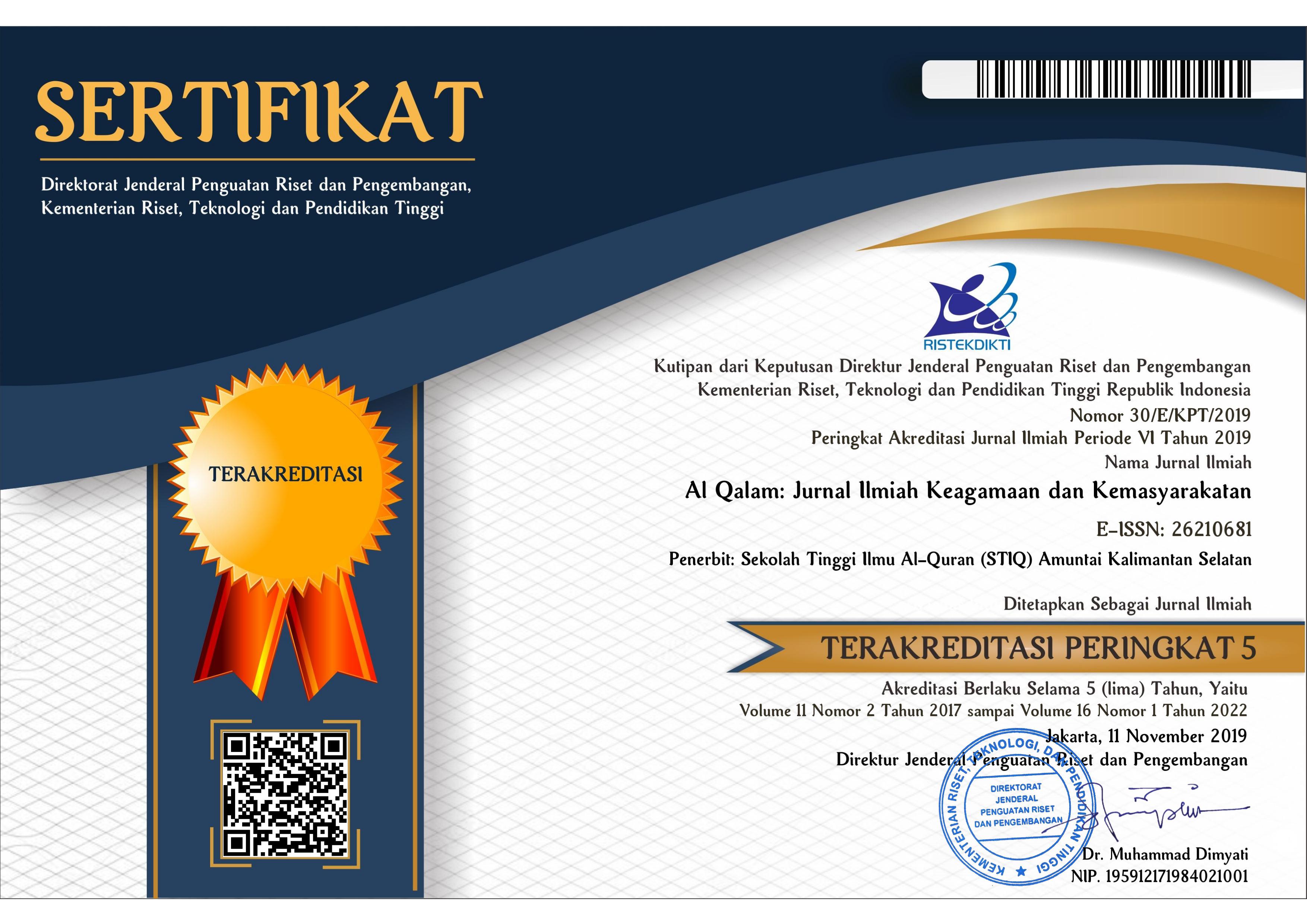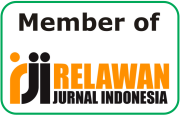The Consequences of Bullying: Analyzing Its Effects on Student Achievement and Psychological Well-Being
Abstract
Bullying has become a widespread issue in schools, with significant consequences for the victims. This study aims to explore the detrimental effect of bullying on students' academic achievement and stress levels. the study used mixed method approach, combining quantitative and qualitative data.A quantitative approach was employed, with data collected from 223 students at SMA Negeri 1 Pangkep using a Likert scale instrument. The findings reveal that bullying behavior, which encompasses students' thinking, feelings, attitudes, actions, and responsibility, is generally in the "good" category. However, the study also found a significant negative correlation between bullying and student achievement, as well as a positive correlation between bullying and student stress levels. The qualitative results found that bullying effects the students in learning and concentrate at school. This study underscores the importance of addressing bullying in schools to support student well-being and academic success. These results highlight the importance of addressing bullying in schools to ensure a safe and supportive learning environment for all students.
Keywords
Full Text:
PDFReferences
Afriliani, A.C., A. Sriati, and E. Widianti. “Academic Self-Concept on Bully Victims in Early Adolescent.” Universitas Muhammadiyah Semarang 8, no. 3 (2020): 247–247. https://doi.org/10.26714/jkj.8.3.2020.247-254.
Al-Raqqad, H.K., E.S. Al-Bourini, F.M.A. Talahin, and R.M.E. Aranki. “The Impact of School Bullying on Students’ Academic Achievement from Teachers’ Point of View.” Canadian Center of Science and Education 10, no. 6 (2017): 44–44. https://doi.org/10.5539/ies.v10n6p44.
Azumah, S.W., V. Adewopo, Z. Elsayed, N. Elsayed, and M. Ozer. “A Secure Open-Source Intelligence Framework for Cyberbullying Investigation,” 2024. https://doi.org/10.1109/icaic60265.2024.10433832.
Azzahra, S.S., M.G.R. Pandin, and M.G.R. Pandin. “The Factors of Bullying and Character Education on Teenagers,” 2021. https://doi.org/10.20944/preprints202104.0102.v1.
Coyle, S., A. Cipra, and S.Y. Rueger. “Bullying Types and Roles in Early Adolescence: Latent Classes of Perpetrators and Victims.” Journal of School Psychology 89 (2021): 51–71. https://doi.org/10.1016/j.jsp.2021.09.003.
Dwipayanti, I.A.S., and K.R. Indrawati. “Hubungan Antara Tindakan Bullying dengan Prestasi Belajar Anak Korban Bullying pada Tingkat Sekolah Dasar.” 1 2, no. 2 (2014). https://doi.org/10.24843/jpu.2014.v01.i02.p04.
Farrington, D.P., and A.C. Baldry. “Individual Risk Factors for School Bullying.” Emerald Publishing Limited 2, no. 1 (2010): 4–16. https://doi.org/10.5042/jacpr.2010.0001.
Fathonah, R., M. Anwar, N. Rosidah, E. Dewi, H.A. Mardiyah, and A.A. Pratama. “Socialization of the Crime of Bullying in SMP 3 Bandar Lampung: Creating a Bullying-Free School” 2, no. 8 (2023): 633–42. https://doi.org/10.55927/jpmb.v2i8.5413.
Guzman, L.D. “Bullying Incidence and Its Impact on the Intellectual Ability of 3rd Year BS Accountancy Students in University of Perpetual Help System.” Laguna-Binan Campus 6, no. 2 (2017): 357–64. https://doi.org/10.25255/jss.2017.6.2.357.364.
Ismaili, E. Consequences of Bullying on Students Affected by This Phenomenon. Richtmann Publishing, 2014. https://doi.org/10.5901/ajis.2014.v3n6p41.
Jan, A., and S. Husain. “Bullying in Elementary Schools: Its Causes and Effects on Students.” IISTE 6, no. 19 (2015): 43–56.
Ma, X., L.L. Stewin, and D.L. Mah. “Bullying in School: Nature, Effects, and Remedies.” Taylor & Francis 16, no. 3 (2001): 247–70. https://doi.org/10.1080/02671520126826.
Mohan, T., and A.Y.A. Bakar. “A Systematic Literature Review on the Effects of Bullying at School.” Indonesian Counselor Association (IKI 6, no. 1 (2021): 35–35. https://doi.org/10.23916/08747011.
Muraro, A., and D.A. Mendoza‐Hernandez. “Managing Food Allergy and Anaphylaxis: A New Model for an Integrated Approach.” Elsevier BV 69, no. 1 (2020): 19–27. https://doi.org/10.1016/j.alit.2019.10.004.
Nurullah, G., and R. Sekartini. “Pengaruh Bullying Antarsiswa terhadap Prestasi Belajar Siswa SDN Pondok Cina 03 Depok.” Badan Penerbit Ikatan Dokter Anak Indonesia 18, no. 4 (2017): 285–285. https://doi.org/10.14238/sp18.4.2016.285-90.
Obregón-Cuesta, A.I., L.A. Mínguez-Mínguez, B.L.D. Barco, S. Mendo-Lázaro, J. Fernández-Solana, J.J. González‐Bernal, and J. González‐Santos. “Bullying in Adolescents: Differences Between Gender and School Year and Relationship with Academic Performance.” Multidisciplinary Digital Publishing Institute 19, no. 15 (2022): 9301–9301. https://doi.org/10.3390/ijerph19159301.
Olla, P., M. Abumeeiz, L. Elliott, R. Foote, M. Lee-Daigle, S. Bartol, and L.A. Erdődi. “Observational Study of Visual Testing Efficacy in Detecting Cannabis Usage.” SAGE Publishing 6, no. 2 (2021): 83–92. https://doi.org/10.35502/jcswb.176.
Safinatunnajah, N., and N.D. Rahmawati. “Bullying and Students Achievement: Trend Analysis of PISA 2012-2015 Results,” 2018. https://doi.org/10.26499/iceap.v1i1.73.
Saprila, R. “Identification of School Bullying Behavior in High-Grade Students of State Elementary School 001 Balam Jaya Kampar” 1, no. 1 (2022): 9–17. https://doi.org/10.56787/edugen.v1i1.6.
Segovia-González, M.M., J.M. Ramírez‐Hurtado, and I. Contreras. Analyzing the Risk of Being a Victim of School Bullying: The Relevance of Students’ Self-Perceptions. Vol. 16. Springer Science+Business Media, 2023. https://doi.org/10.1007/s12187-023-10045-x.
Shiba, D., and K. Mokwena. “The Profile of Bullying Perpetrators and Victims and Associated Factors Among High School Learners in Tshwane District, South Africa.” Multidisciplinary Digital Publishing Institute 20, no. 6 (2023): 4916–4916. https://doi.org/10.3390/ijerph20064916.
Sprague, J.R., and V. Nishioka. Preventing and Responding to Bullying and Harassment in Schools: What We Know and What Can Be Done. Emerald Publishing Limited, 2012. https://doi.org/10.1108/s0735-004x(2012)0000025012.
Steele, N.M., B. Rodgers, and G.J. Fogarty. “The Relationships of Experiencing Workplace Bullying with Mental Health, Affective Commitment, and Job Satisfaction: Application of the Job Demands Control Model.” Multidisciplinary Digital Publishing Institute 17, no. 6 (2020): 2151–2151. https://doi.org/10.3390/ijerph17062151.
Strøm, I.F., S. Thoresen, T. Wentzel‐Larsen, and G. Dyb. “Violence, Bullying, and Academic Achievement: A Study of 15-Year-Old Adolescents and Their School Environment.” Elsevier BV 37, no. 4 (2013): 243–51. https://doi.org/10.1016/j.chiabu.2012.10.010.
Triatmojo, Ahmad Oktavian, and Endang Hangestiningsih. “Dampak Bullying Terhadap Kondisi Psikososial Siswa Kelas II Di SDN Suryodiningratan 1 Yogyakarta.” TRIHAYU: Jurnal Pendidikan Ke-SD-An 5, no. 3 (November 26, 2019). https://doi.org/10.30738/trihayu.v5i3.6115.
Zhao, Na, Shenglong Yang, Qiangjian Zhang, Jian Wang, Wei Xie, Youguo Tan, and Tao Zhou. “School Bullying Results in Poor Psychological Conditions: Evidence from a Survey of 95,545 Subjects.” Frontiers in Psychology 15 (January 24, 2024). https://doi.org/10.3389/fpsyg.2024.1279872.
DOI: http://dx.doi.org/10.35931/aq.v19i2.4833
Refbacks
- There are currently no refbacks.
Copyright (c) 2025 Syahruddin M, Fien Pongpalilu, Sitti Aisyah, Rosmawati Abdul Maing, Feby Purnamasari

This work is licensed under a Creative Commons Attribution 4.0 International License.
Al Qalam: Jurnal Ilmiah Keagamaan dan Kemasyarakatan
index by:
Publish by:
Sekolah Tinggi Ilmu Al-Qur'an Amuntai
Contact us:
Address: Jl. Rakha Pakapuran, Amuntai Utara
Kabupaten : Hulu Sungai Utara
Kode Pos : 71471
Provinsi : Kalimantan Selatan
Telephone : 085251613000
Email: hafizhihusinsungkar@gmail.com

This work is licensed under a Creative Commons Attribution 4.0 International License


